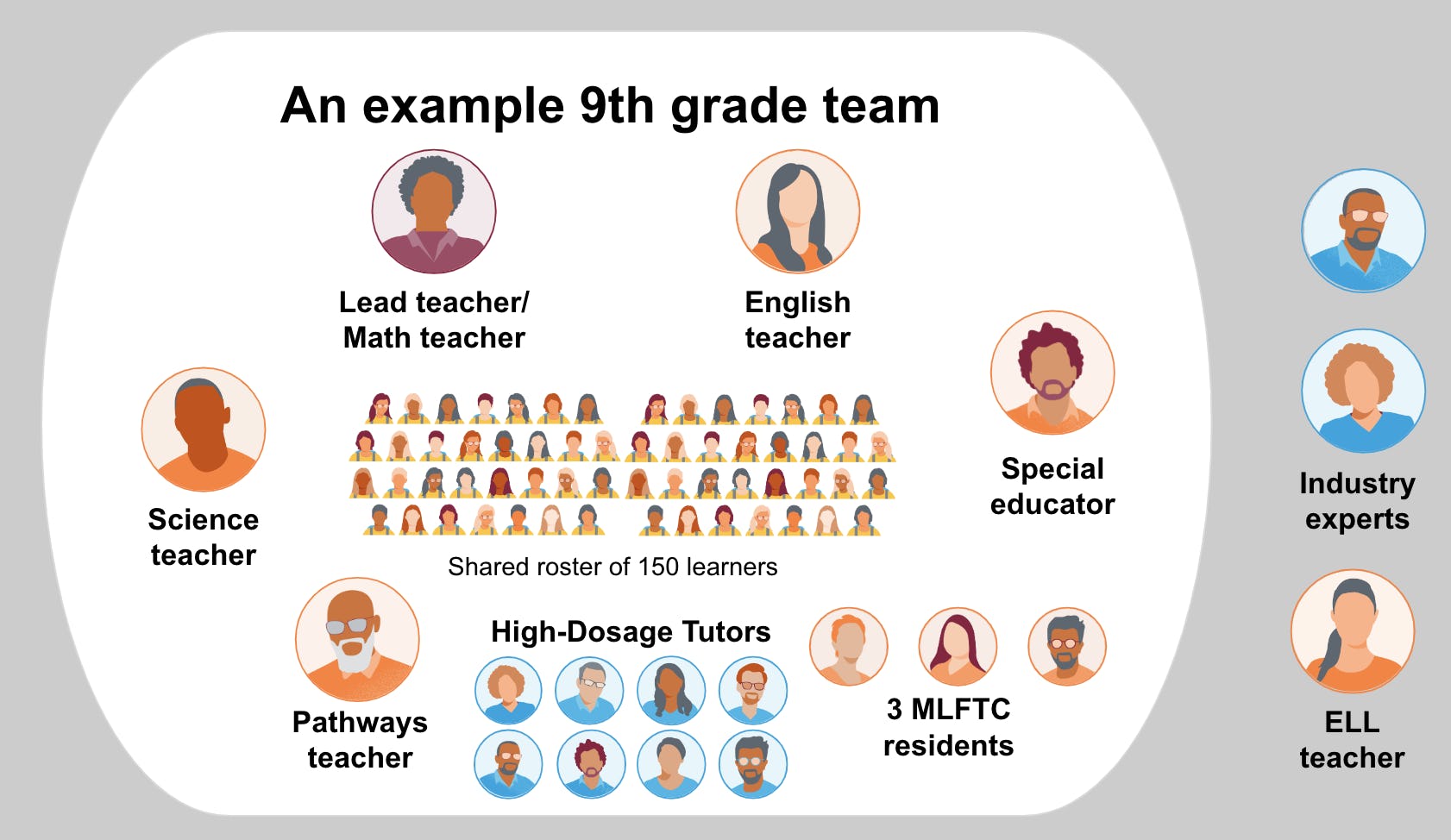The brightest minds across higher education and K-12 are re-examining the one-teacher classroom, while taking on our most difficult challenges: achievement gaps, the teacher pipeline, and job dissatisfaction. An expert team discussed these topics and more at a recent EdWeek webinar. Read below for the 5 biggest takeaways from the panel discussion:
1) Accelerating student learning, equity, teacher job satisfaction, and individualized instruction are interconnected problems that must be addressed in unison, rather than viewed as isolated issues.
Carly Robinson, Postdoctoral Research Associate, Annenberg Institute at Brown University
“...Figuring out how to accelerate learning is really a matter of equity….When families can afford it, they're often supplementing their children's learning with educational support outside of school….but putting the onus of accelerating student learning on families and individuals is only going to increase inequalities….
We really need to be rethinking what happens during the school day. What we want to see is students, particularly those who are struggling, receiving individualized instruction from caring adults….We see teachers engaging in huge efforts to accelerate their students' learning, but what we're asking of them is, frankly, almost impossible to achieve. That's leading to burnout and teachers leaving the profession and not feeling appreciated or satisfied with their jobs.
I think this is really all interconnected. We need to be thinking of ways to provide more support to teachers, be responsive to individual student needs, and enhance connection.”
Learn more about Carly Robinson’s research.
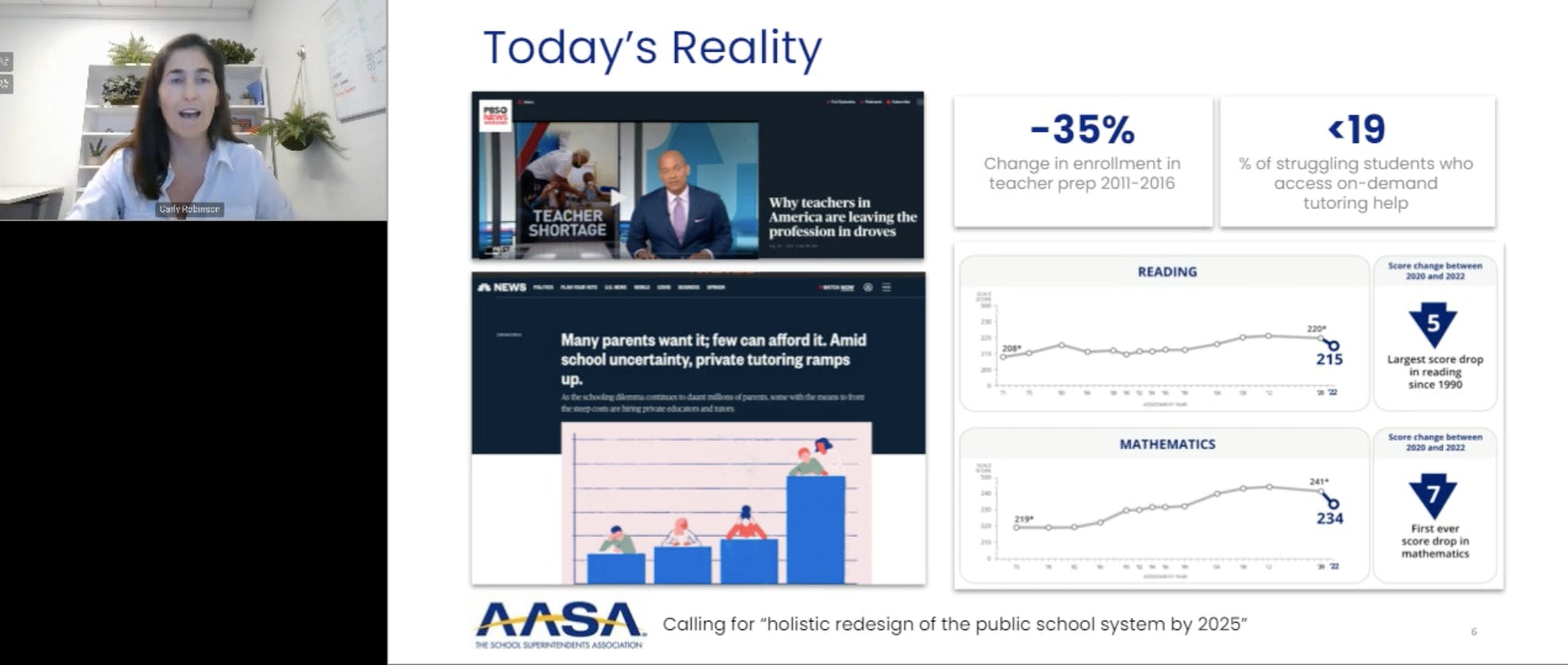
2) Distributed expertise, or leveraging the unique skills and abilities of each adult in your school building, offers an interesting solution to teacher shortages while meeting the need for personalized education.
Dr. Lisa McCray Cannon, Sr. Program Manager, Next Education Workforce, Arizona State University
“Why should we have to choose one [teacher]? Instead of choosing one, why can't four of them surround that roster of students? Instead of individual silos of one teacher with 25 students, we're looking at four teachers, four educators with huge expertise in a variety of areas that can now surround a roster of a hundred students and give them what they need. Because we know that personalized learning requires many skills, and not one person can be expected to have that….
All of a sudden now, instead of that one teacher working in isolation, we now have educators with different levels of experience….How do we distribute that expertise, so not everybody's carrying the exact same extremely heavy load? We're excited [about] the idea of high-dosage tutors...who…can come in and provide enrichment, intervention, specialized focus...teachers don't have to feel like they have to spend their time becoming experts in a field that they never knew about.”
Watch the overview video: Changing the model: Building the Next Education Workforce
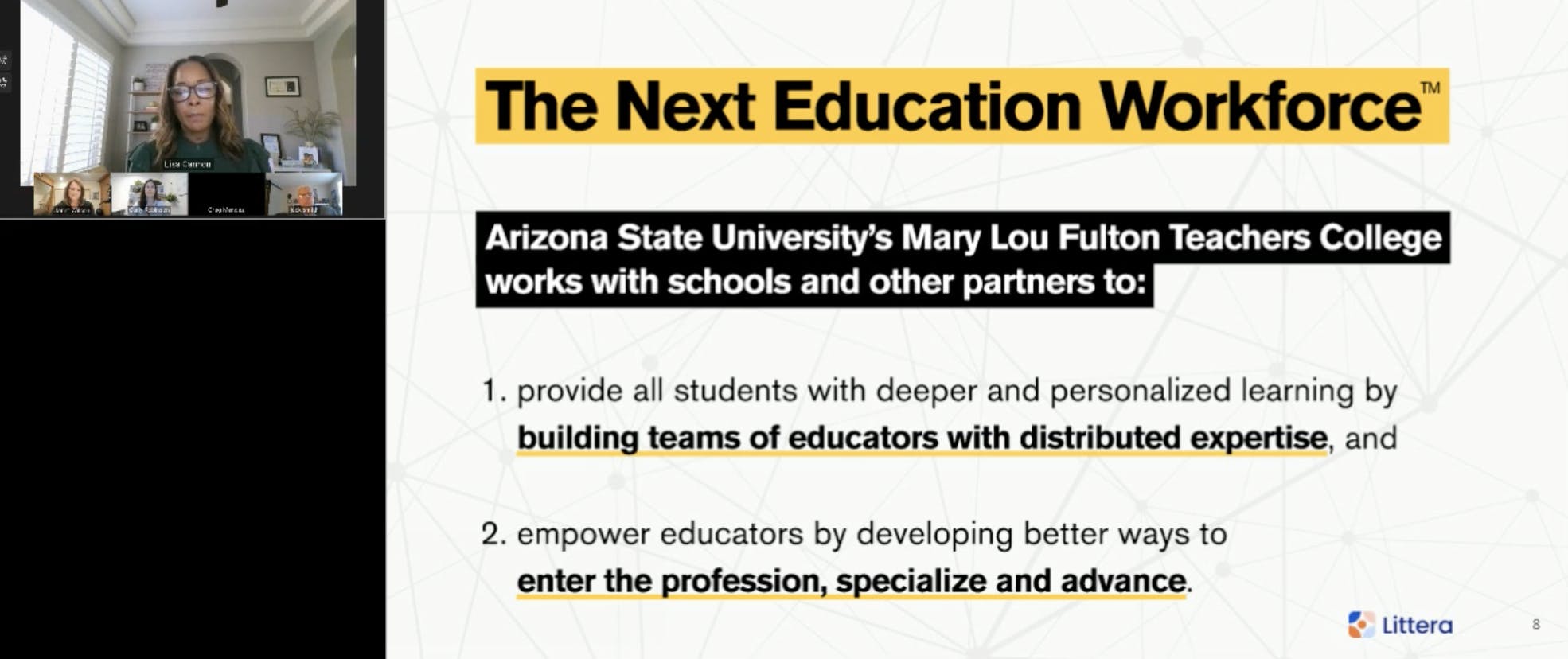
3) When done properly, tutoring is an effective tool for individualizing instruction, accelerating learning, and building teams of effective, caring adults (rather than one overworked teacher).
Carly Robinson, Postdoctoral Research Associate, Annenberg Institute at Brown University
“Hundreds of really high-quality studies show that tutoring can lead to several months of additional learning in math or reading…[but] tutoring can mean a lot of different things to different people. And not all tutoring is effective….
Effective programs tend to share several of the same elements. Tutored students are not sporadically dropping in for homework help. They are being tutored multiple times a week, three or more times a week for an extended period of time. Tutoring is also by definition delivered in small groups, one on one instruction or up to three or four students in a session, but any more at one time, and it's not really tutoring anymore.
Effective programs tend to place a high priority on developing these strong tutor-student relationships, which requires having a consistent tutor who is skilled at engaging students in developing positive relationships. And so I think this brings us to the question of who should be doing the tutoring.
Research does show that a wide range of people can be effective tutors if they receive the right training and ongoing support. Grand Valley State University in Michigan comes to mind. They have developed a really robust tutoring program that serves schools across the state and has great potential to scale….One other thing I think we're really seeing is that high-impact tutoring is high-impact when it's embedded into the school day. And it's not because kids magically, you know, learn more during the school day. But I will say we're continuing to see evidence that out of school time or, you know, tutoring opportunities if they're not embedded into the learning experience, tend to become more of an add-on.”
Learn which types of tutoring work: The inequity of opt-in educational resources and an intervention to increase equitable access [Brown University Research]
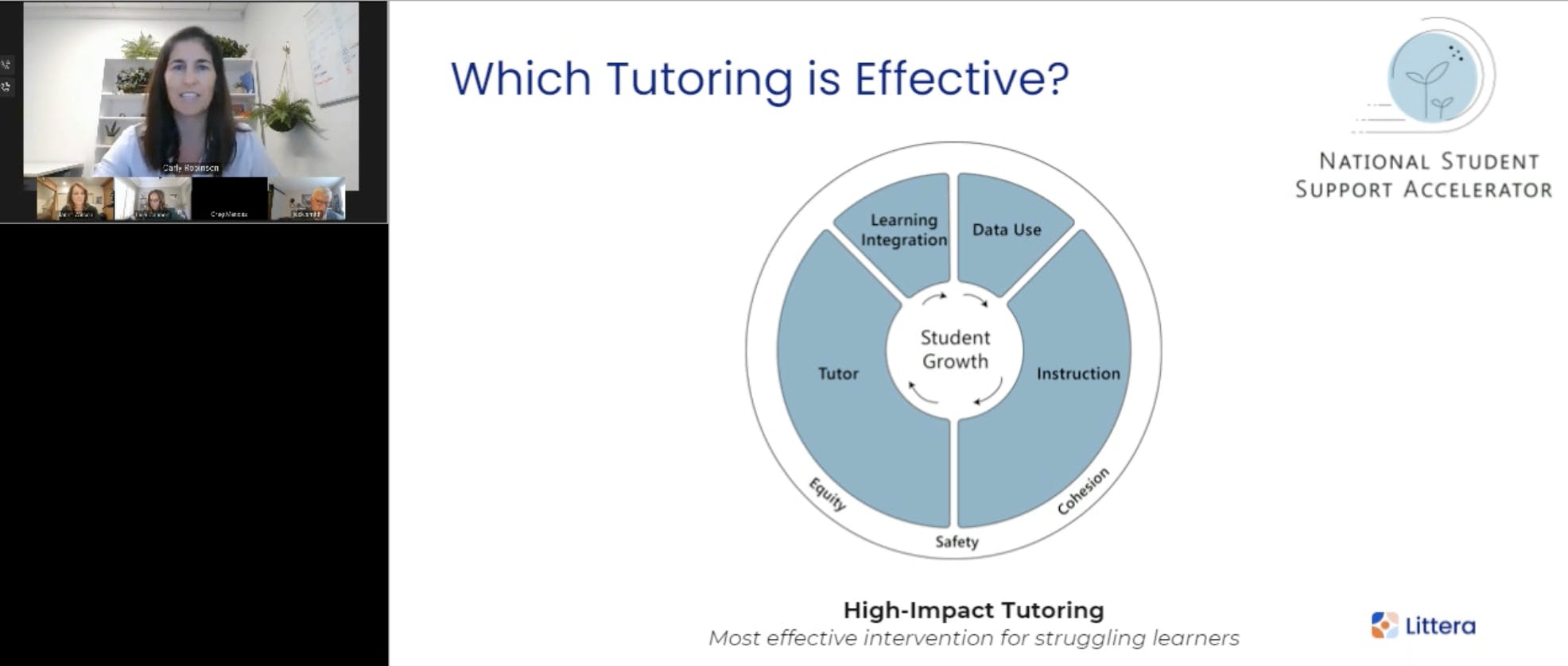
4) Each school is unique. Start small, and ensure that the team-based approach is working before expanding.
Greg Mendez, Principal, Skyline High School, Mesa Public Schools, and former Principal of Riverview High School
“Riverview High School [is] an alternative school. It [is] really an opportunity for students in our school district to stay in school. We were a traditional one-teacher, one-classroom model. Then about two years in, we kind of realized, it didn't work the first 10 years while they were in school. I don't know why it would work now.
We started small. We had two teachers that said, 'Can we share a roster of kids?' My job as a leader, as a change agent is to say yes, and then remove any barriers that may have existed. Whether that's scheduling, whether that's a wall being knocked down in a classroom, absolutely, whatever it takes to get the movement going. Well, those two teachers worked together, shared a roster, learned how to connect their content together, [and] share the space so they were not by themselves.
People started to notice that these two professionals were having much deeper conversations, not only about students, but their own teaching practice and leaning on each other to provide a good learning experience. So that morphed into two more teachers wanting to work together. Well, then it turned into…the high school content teachers going, 'Hey, can we just share all the kids all day long?' Once again, my job is to say yes and then figure it out.
Everybody's context is different. Everybody's employees are different. Everybody's students are different. So it's really about, what can you do on your campus to meet the needs of all students?”
Read Riverview's story and results.
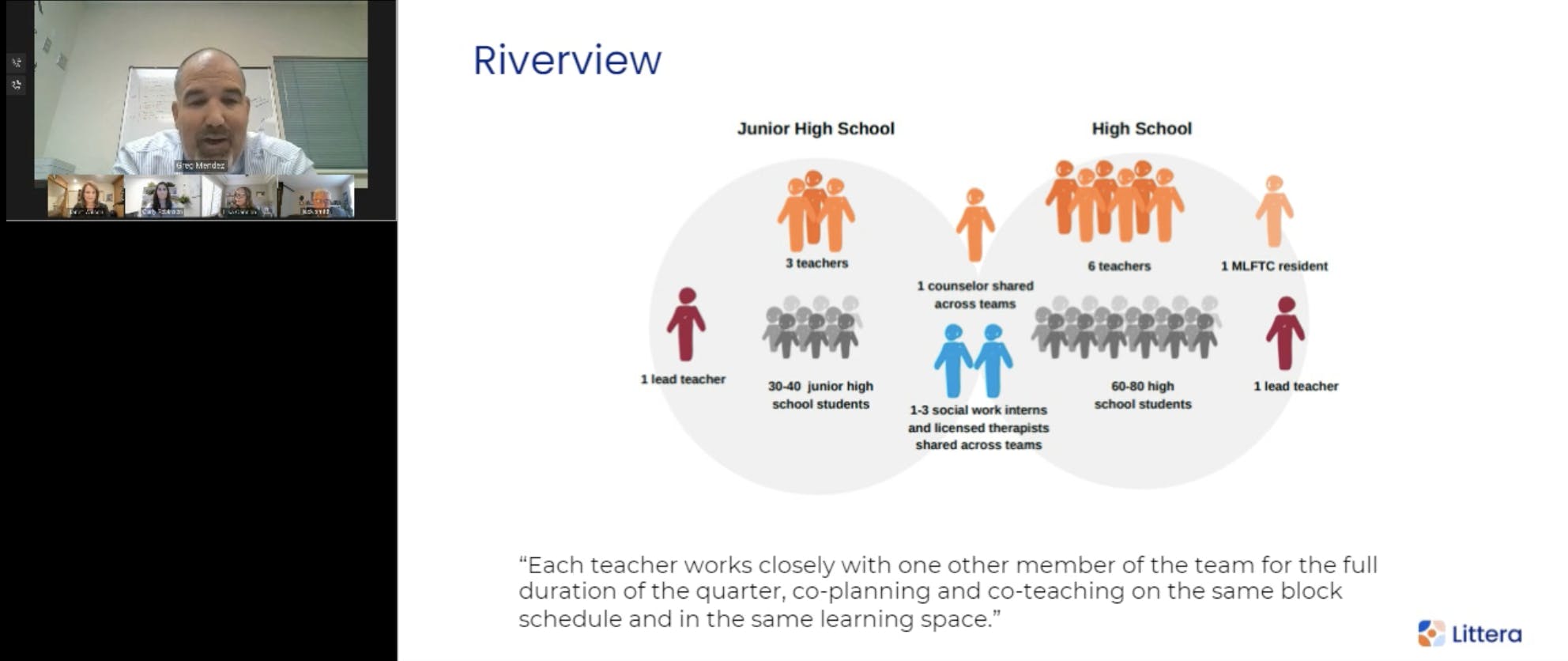
5) Team-based instruction (virtual and in-person) creates deeper and more personalized learning for every student.
Dr. Jack Smith, AASA Lead for Next Education Workforce; former Superintendent of Montgomery County
“The initial research coming out of this is showing that when we have a group of adults who gather around students and those adults have a distributed expertise, so they can do lots of different things together on behalf of students, that we will create deeper and more personalized learning for every student.
That's what we've been calling for decades, differentiated learning, but we haven't gotten it done. And so to use hybrid models that use both the digital world, and the in-person world to create teams, so adults feel supported in their support for children to create greater expertise so that I don't have to know everything as the English teacher in the group. I can know some things and I can help students. We can do all of these things if we're willing to change our mindset.
I noticed there's a question here. What about the money? This is being done in lots of different places with lots of different levels of funding. You change the mindset and suddenly you have real benefits for the students and real benefits for the adults that flow through to the students.”
Read the School Superintendents Association report: An American Imperative: A New Vision of Public Schools. A Report from the Learning 2025: National Commission on Student-Centered, Equity-Focused Education
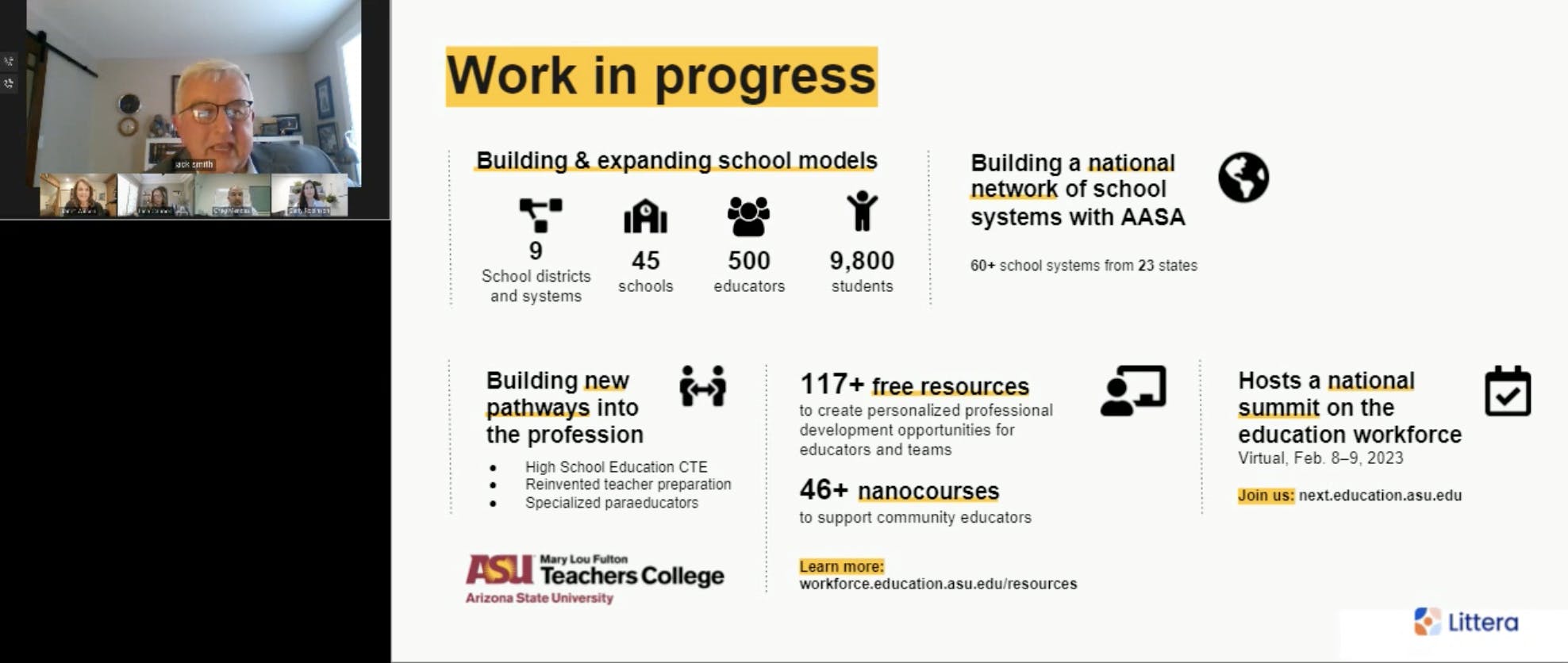
Moving forward
The problems facing K-12 education have been exacerbated over the last few years, pushing them to the forefront. There are plenty of exciting new initiatives aimed at building a system that works better for all stakeholders: students, teachers, and their families. To learn more about high-impact tutoring, subscribe to this blog, or follow us on Twitter and LinkedIn.
